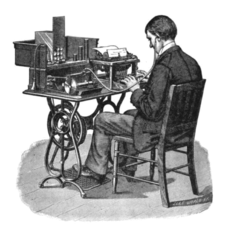
02 Aug Office Ergonomics

Time and time again, I find myself trying to fight the effects of bad “computer desk” posture with my clients. With my business centered in Silicon Valley, I’ve found that bad posture is rampant. Well, let’s just say it’s an epidemic. This post will hope to enlighten all you engineers, bloggers and desk jockeys as to what the perfect desk set-up is so that you may all enjoy better posture and less pain when you are really old. Read on!
What is ergonomics?
Ergonomics is the process of optimising human well-being and performance. This involves assessing and improving safety, comfort, productivity and ease of use of equipement. In the workplace, ergonomics usually relate to the employees workstation, which in a high number of cases, is a desk and computer.
How should my desk be set-up?
In order to set-up your desk, chair and computer correctly and avoid developing poor posture and injuries, follow these simple (but prolific) guidelines:
The Chair:
- Ensure you have a good chair with lumbar support, head and arm rests.
- Adjust the height of your chair so that when sitting at your desk the following are true:
- Your thighs are supported by the chair when your feet are flat on the floor and there is a right angle at the knee.
- When you place your fingers on the middle row of keys, your forearms rest on the desk.
- There is no bend at the wrist (i.e. a straight line from your wrist, across to your hand and fingers)
- Your elbows are supported by the arm rests when your forearms are rested on the table. Some chairs have adjustable arm rests which you can move to the right height for you. Those without adjustable arm rests can be raised by wrapping foam around the rest until it is the right height and tape it in place.
- You may require a foot rest under your feet if your desk is too high to have your forearms supported on the desk and feet flat.
- Adjust the back support so that when you sit upright the lower back is supported fully. If the curvature of the chair does not match your back you may require additional lumbar support.
- Ensure there is at least a 2″ (5cm) space between the back of the knee and where the chair seat stops.
The Monitor
- Now that your chair is correctly positioned, adjust the height of your computer monitor. The top of the monitor should be at eye level, meaning you keep your head straight and look down slightly with your eyes. Monitor height can be adjusted using boxes, books, etc.
- Check that the monitor is directly in front of you.
- Move the chair close to the desk until you are in a position where the elbows (when the forearms are resting on the desk) are directly under the shoulders.
- From this position the screen should be 22-26″ (55-65cm) away from you. If not, position it at this distance. If you had it closer than this you may need an eye examination.
Your Desk
- Your desk should be kept clutter-free to allow for all of your equipment to be positioned correctly.
- If when your chair is positioned correctly your desk is too low or high, consider purchasing a new desk. This may seem like drastic and expensive action but it may save you hefty treatment bills later down the road!
Mouse and other equipment
- Position your mouse as close to you as you can whilst maintaining the elbow beneath the shoulder, the elbow supported on the arm rest and the wrist on the desk.
- When using your mouse, move the arm whilst keeping the forearm rested on the desk. Don’t use the wrist to move the mouse as this can lead to repetitive stress injuries.
- Position your phone and any other equipment that is not permanently in use to the left hand side, within arms reach.




Sorry, the comment form is closed at this time.